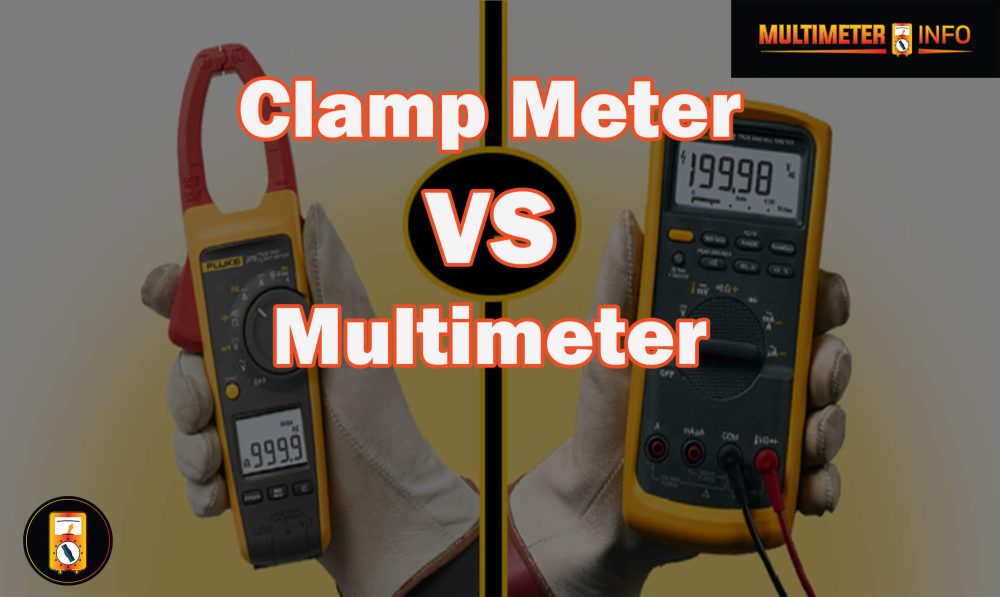Are you having trouble using your multimeter to test the ground? When working on electrical systems, it is critical to test the ground connection to avoid potential hazards such as shock or fire. It’s something that nearly every electrician, regardless of specialty, will have to do at some point. Fortunately, even beginners can learn how to use a multimeter for this purpose – and this blog post will show you how! Continue reading to learn how to safely test the ground with a multimeter.

What is Grounding?
Grounding is a type of electrical bonding that provides a direct path to the ground for electric current and another potentially dangerous buildup of electricity. Without proper grounding, electric appliances may not function properly or can become unsafe. Grounding helps protect against electric shock and damage to equipment due to arcing or short circuit currents.
It also prevents electromagnetic interference (EMI) from affecting other devices connected to the same power source as well as providing an easily accessible point of reference for all circuits in a given system. To ensure adequate protection, all exposed metal parts should be connected with a suitable conductor, usually, copper wire, forming an effective ‘ground’ network. Testing the ground with a multimeter is one way to make sure it is working correctly.
It is important to keep in mind that electrical systems can have different types of grounds, so it is important to read instructions carefully before performing tests with a multimeter. This will help ensure accurate results and minimize the risk of injury due to shock or fire hazards. Additionally, always make sure you are using appropriate safety equipment when testing any electrical system.
How To Test Ground With Multimeter?
Testing ground with a multimeter is an important process for any electrician. It helps to identify if there is a safe and proper connection between the electrical wiring and the ground. Here are the steps you need to follow when testing ground with a multimeter:
- Insert your probes into the multimeter Make sure that your red probe is inserted in the “VΩmA” port, while your black probe should be inserted in the “COM” port.
- Set the Multimeter to AC Voltage by rotating the dial until it reads “ACV” or “200v” (depending on what type of meter you have).
- Measure voltage between live and neutral ports. To do this, connect the red probe to a live port and the black probe to a neutral port. Check the multimeter display for the voltage reading.
- Measure voltage between live and ground ports. For this step, connect the red probe to a live port and the black probe to a ground port. Check the multimeter display for the voltage reading.
- Measure voltage between neutral and ground ports. Connect the red probe to a neutral port and the black probe to a ground port. Check the multimeter reading for any potential readings of current flowing through these two points when no current should be present.
- Evaluate results After you have finished testing with your multimeter, compare your readings to the recommended voltage levels. If you find that any of your readings are higher than necessary, then there may be an issue with the wiring or ground connection in this area and it should be fixed immediately.
Testing ground with a multimeter is important for ensuring that proper electrical current flows through your home safely. Following these steps will help you test ground quickly and easily without needing specialized equipment or knowledge. Always remember to stay safe when working around electricity!
What tells you if your ground wire is bad?
If you suspect that your ground wire is bad, there are a few indicators to look out for. The first and most obvious indicator is if the appliance or device connected to the wire isn’t working properly. This could be due to a malfunctioning power source or a lack of sufficient grounding, so it’s important to make sure that your wiring is in good condition before assuming that the appliance itself is faulty.
Additionally, you may want to check for signs of physical damage on the ground wire. If it looks frayed, burnt, exposed, or otherwise compromised, this is an indication that it’s not providing adequate protection any longer. It’s also possible that corrosion has built up on connections along the wire which can interfere with proper grounding. Lastly, if your wire is loose at the connection point, this may indicate that it’s not securely attached and should be tightened or replaced.
Remember, a bad ground wire can pose a safety risk to you and anyone else who uses the appliance or device in question. Make sure to take proper precautions when testing and replacing any faulty wiring. If you’re not comfortable with handling electrical wires, it’s best to call a licensed electrician for help.
What should be the grounding resistance?
It is recommended to keep the grounding resistance at a maximum of 0.5 Ω. The most accurate way to measure this value is by using a digital multimeter with a good resolution of fractional ohms. To measure the resistance, connect the multimeter to the grounding pin of the power cord and an exposed metal surface on the chassis. Once connected, record this value for future reference. It is important to ensure that all connections are clean, robust, and undamaged before measuring. If the measured value exceeds 0.5 Ω, it is recommended to take measures to reduce the resistance by replacing corroded or loose connections with better ones, if necessary.
Keeping a low grounding resistance helps ensure that any fault current created in an electrical system is directed safely away from equipment and personnel thereby reducing risks associated with electric shocks.
How do you know if grounding is correct?
To determine the correctness of grounding, a continuity test should be performed. A continuity tester can be used for this purpose. Simply attach one end of the tester to an outlet and another end to the earth ground rod or post that is installed at your building or residence. If there is no resistance when current flows between them, then the grounding is correct and functioning as it should.
This procedure is essential to ensure safe electrical installations, as well as prevent shocks and other hazards related to improper earthing of circuits. Additionally, all wiring connections should be tested regularly to verify their integrity over time. Lastly, make sure that you check the insulation of the wires which are connected to your outlets – any exposed wiring should be covered with appropriate insulation material. Following these steps will ensure the safety of your electrical installations and provide peace of mind.
The proper grounding of electrical systems is essential for ensuring safe and efficient operation, so it is important to perform a continuity test before turning any power on in your home or office. If you are unsure how to do this correctly, contact a qualified electrician who can advise you on the correct procedures to follow. It is also recommended that all wiring connections be tested every few years to ensure their integrity over time. By following these steps, you can make sure that your electrical system is always operating safely and efficiently.
Frequently Asked Questions:
Any digital multimeter should be able to measure ground resistance and voltage levels accurately. However, it is important to make sure that your multimeter has a suitable range of measurements so as not to overload or damage any components you are testing.
When using a multimeter, always ensure that the power switch on your device is set to off before connecting it to any live circuits or outlets. In addition, you should wear protective gloves and eyewear when performing tests with a multimeter.
A continuity reading is considered good when the meter reads 0 ohms. This indicates that there is a complete electrical path between two points, allowing electricity to flow freely through the circuit.
Conclusion:
Finally, testing the ground with a multimeter is a valuable tool that can help you in identifying any electrical faults in your wiring system and keeping your home or workplace safe. Ground testing is a simple process that only requires the proper safety equipment and tools, as well as some basic electrical knowledge. Following the steps outlined above, you should be able to test your ground quickly and accurately, ensuring that everything complies. Remember that if you are unsure, it is best to contact a professional electrician who has the necessary experience to detect more complex issues. When working with electricity, safety comes first, so make sure you take all of the necessary precautions before beginning any work on your own.





